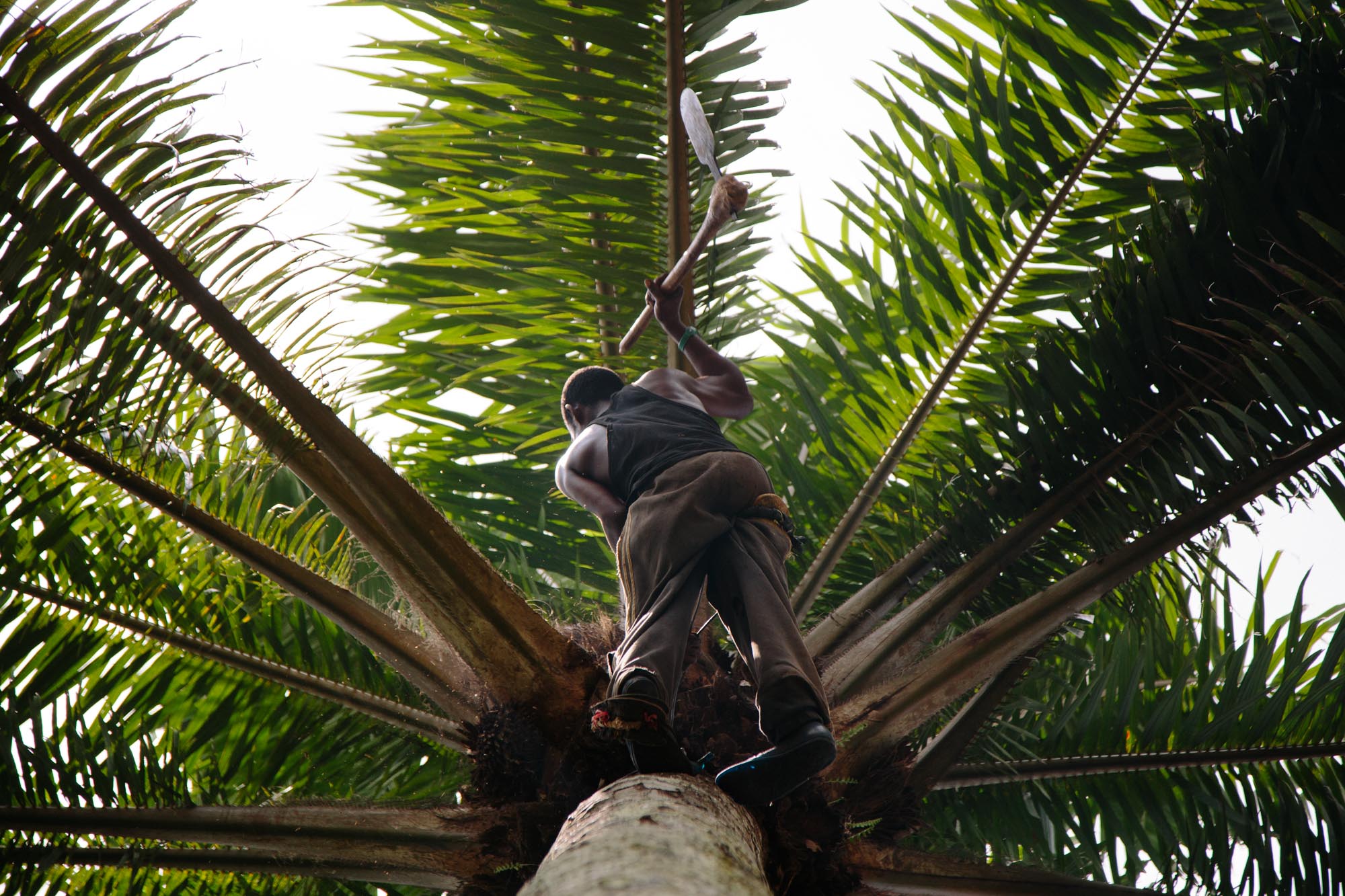Palm oil

official language spoken in nigeria: english | Number of other languages: 521 (9 of which are now EXTINCT
Our flight landed in Lagos at 5.05am, we found our Nigerian partner and hopped in a car, blissfully avoiding morning traffic into the Capital by heading straight North – to Ibadan, in Oyo State. From there we were to head on to Ikereku, a small village where we would be conducting our first ethnography that afternoon.
When we finally arrived at the junction between the main road and the dirt track leading to Ikereku we found ourselves stopped by a group of heavily armed policemen who wanted to check our reasons for traveling. The surprise came when the policemen asked to talk to us privately, away from our Nigerian team.
It transpired that they were afraid we were being kidnapped, as they had never seen a European heading that way out of their own volition. This is the moment it hit me: in 8 years doing research in Africa, and countless projects in Nigeria, I had never ventured that far from one of the main cities. And as far as I knew, neither had any of my similarly specialised London friends.
We arrived at the village and met Olushula, who was overlooking the rest of her family breaking open palm nuts with sharp stones to make Palm Oil. For us this was exciting, a clear sign that things are changing in Ikereku. The people living in this village are clearly moving away from subsistence production, and generating enough value to have income to spend on non-essential imported goods.
Indeed this is not an unusual scene in Nigeria (though one you are unlikely to see in Lagos). Domestic Palm Oil production in Nigeria is nearly 900,000 tons per year and 80% of this is made by several million smallholders using the same traditional methods we were witnessing. The scene before us was a window into a vital element of the Nigerian economic story.
The most interesting thing here is that Palm Oil production is run almost entirely by women. Men sometimes do the initial harvesting, but it is mostly women who process the product and sell it at the local market, where a 20 litres plastic jerry can of Palm Oil can fetch up to 1000 Nairas (about £4).
The fact that many Nigerian women have access to their own source of (beyond subsistence level) income and are the ones who get to decide how this money gets spent should be a watch out for brands, It’s not just the men who have disposable income to spend!
Looking at the bigger picture, Palm Oil production tells an interesting story about the Nigerian economy as a whole. Back in the 1960’s Nigeria was the world’s largest producer of Palm Oil. Today it is a net-importer, having long since been overtaken by the likes of Malaysia and Indonesia.
This may sound like bad news for Nigeria as production has stagnated, but it is also due to an increase in domestic demand. Nigerian households are becoming more affluent and more money means more demand for Palm Oil on both a domestic and an industrial scale. Specifically, we see this as a sign of the times, as infrastructures in many parts of the world reach a critical point where they can truly connect and empower the vast amounts of agrarian populations left behind, without the need to go through large-scale private or public structures which would inevitably absorb some of the added value.
Back on the ground again we saw this for ourselves in how the women we spoke to were spending their money and making choices between the different options presented by both local and global brands.
What we witnessed is a high level of brand awareness, even in categories that are still difficult to access. Consumers here share the same impressions and preferences when it comes to choosing the best for themselves and their families, and are often willing to compromise on quantity rather than quality.
Global brands, who enjoy the halo of respectability given by time, widespread acceptance and strong media presence, are preferred to the many new brands vying to close this gap in market. The strongest worry in this market, as in many others, is about dangerous consumable goods, made with inappropriate formulations. This is true of local brands, but even more so of Chinese imports.
The desire to access better, safer, more efficient products, in packagings that express status and premiumness, is entirely the same as everywhere else. The context in which these may (or may not) be found is still very different - but this difference is fading more each day.
Through the methods and outputs that lie at the heart of BAMM’s approach, we are constantly driven to journey ever further from the business centers of the world. This is obviously why we are in this business: a hunger to discover, to understand, to see more. As roads get better in Nigeria, as the power grid stabilises in Bolivia, as standards of living rise in the furthest corners of China, opportunities for brands are becoming more and more apparent. Much ink has been spilled about the emerging middle class of the world, and now we are looking at the next wave of consumers pulling themselves out of a subsistence economy and into the global consumer market.
This is a critically important global demographic that, for the next two decades, will be entirely out of reach of focus group facilities, and for whom little quantitative data exists to compare with. It means we will have to be nimble, we will have to be humble, and we will have to re-think everything we know, and how we do everything.
Text by Matthew Baker
Photography by Matthew Baker & Glenn Zimmatore









